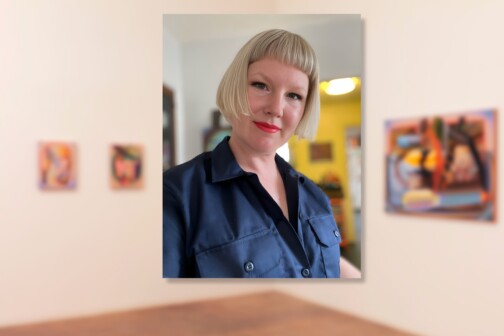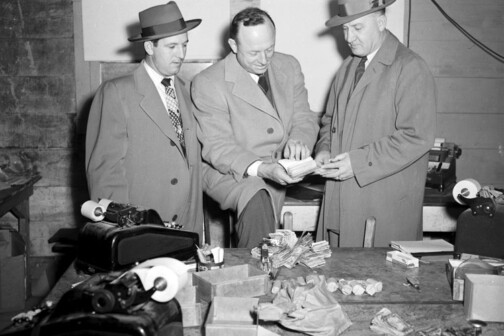THERE AREN’T many songs written about the Trinity River, our river that never was. But John Neely Bryan settled on its banks and dreamed until he died of a time when its waters would shuttle both people and cargo to and from a center of bustling commerce. Eventually, Dallas became that matrix of activity, but not because of the Trinity-in spite of it. Dallas’ railroads and highways and airports boomed. Through human energy and enterprise, nature’s deprivations were all but forgotten. The Trinity was safely bridled by two adequate levees on its flood plain, and Dallas went on about its business.
But Town Lake, a group of urban pioneers’ pipe dream that the Trinity River be deepened and dammed at one end-that the now wasted riverbed be transformed into a sparkling lake in the heart of the city-has remained alive through years of criticism. Although the project seems as preposterous to some as Bryan’s hopes of a mini-Mississippi, skeptics must remember that practicality is not this city’s rule of thumb. The Trinity continues to tantalize planners with its potential.
Arguments for Town Lake invariably begin with talk of world-class cities. The places Dallas so admires and aspires to rival all have access to bodies of water. Residents of Paris, London-even recently revamped Baltimore -take pride in their tranquil mid-city waters. A town lake banked by trees and beautiful landscaping has done wonders for Austin’s allure. San Antonio’s Riverwalk, paradise bordered by outdoor cafés and curio shops, is a honey-mooner’s paradise. In Boston, the Charles River is lined by tall buildings, universities and an amphitheater.
Dallas residents are quickly learning that congestion and chrome, reflective towers and enormous malls by themselves do not a healthy city make. Urban sociologist Dick Mathis says, “Dallas has had the good fortune to ride on the crest of an economic boom, but such booms are extremely rare and don’t last forever.” When the boom is over, Mathis says, “We’ll need something else to inspire loyalty and keep us competitive with other cities. Town Lake would help immensely. It would help, together with the Arts District, Reunion and Farmers’ Market, to give us a stable core that would be proof against the blight and flight affecting other cities.”
Certainly the land surrounding the Trinity’s flood plain deserves our attention. It runs parallel to some of the city’s most expensive real estate-land that lay waste while the cost of downtown space drove shop, restaurant and theater owners to the suburbs. More recently, as the acreage lay fallow, a host of corporations moved not to downtown but to Las Colinas and LBJ Freeway. Downtown became an 8-to-5 environment, an empty shell after-hours, bordered by deteriorating neighborhoods and deserted warehouses.
The dream of Town Lake goes something like this: By damming the Trinity and excavating the flood plain, by planting trees and making trails, the city could turn what is now a swampy void into a scenic, valuable recreational area. Town Lake would extend the city’s boundaries visually and psychologically, reaching across the lake to major residential areas on both banks and renewing interest in long-neglected Oak Cliff. Downtown could lose its spooky evening isolation. Town Lake could soften the concrete and glass with a watery fringe, balancing downtown’s commercial elements with warmer, softer qualities.
Writing about life in Dallas, Gail Thomas, director of the Dallas Institute of Humanities and Culture, explores the power of water: “The need for water is archetypal, universally true for humankind throughout the ages. We have a need to be near water, to look at it, to put our hands and feet in it. Its presence calms the soul, stimulates dreams and assures a sense of permanence and abundance.” A lake, Thomas says, has a different effect from a riverbed or flood plain. “A riverbed is a void we rush to get across, but a lake is a thing to be experienced in and of itself. We linger about a lake. It’s a magnet that draws people and erases barriers.”
No doubt, Town Lake would enchant the eye and refresh the spirit. Never before has the need for such an oasis in Dallas been so apparent. But converting the Trinity into such a playground was estimated to cost $109 million when the project was started in 1975 (about $200 million in 1983 dollars). Taxpayers and city fathers are understandably hesitant to spend that kind of money on any such soothing waters.
In 1978 (the last time Town Lake was presented in a bond issue), city parks were less crowded, and Las Colinas, LBJ Freeway and Piano were lesser threats to downtown’s leadership. At that time, some people thought that Proposition 13, the tax-limiting measure that had just passed in California, dampened the voters’ inclination to splurge on trees, grass and water. Others said that too many questions about water quality and engineering feasibility were left unanswered. Taxpayers had just recovered from money lavished on D/FW airport and City Hall. The library and art museum had priority, and voters wanted to take their public works one at a time. Town Lake would have to wait.
Today, the economic and prestige value of the Arts District, Reunion Arena and the new library has been clearly demonstrated, and citizens now may be open to the idea of Town Lake. The project certainly has an important champion in City Manager Charles Anderson. His strategy in promoting the idea is to counter all objections to the lake concerning water quality, environmental effects, affordability and urban design and development standards with as much detail as possible. Anderson insists that he will not ask the City Council to put Town Lake on a bond issue unless the city gets definitive, conclusive answers to all these issues.
But so far, talk of Town Lake has been anything but conclusive and definitive. The existing plans for the project are based on a preliminary design report completed in 1975. The city is now accepting proposals from professional consulting firms to conduct feasibility studies, a sediment analysis, a continuing analysis of the present water in the Trinity channel and an environmental assessment. Another study will include new information on the development that can be expected in the area as well as a complete cost-benefit analysis. The plan now is to have all these analyses completed and presented to the City Council in mid-1984. Planners hope to have a bond election scheduled by the spring of 1985.
The most controversial of the issues to be studied is water quality. The goal of Town Lake’s proponents is to create a body of water safe for non-contact recreation, similar to White Rock Lake. Critics of the current plan say its water-quality measures stand a 50 percent chance of failure because of water runoff problems (oil from streets, fertilizer washing into the river and more). In addition to these objections, others opposed to the plans as they now exist point out that nutrients in the lake water would make it appear bright green. Because there are no provisions to circulate the water, algae would soon overrun the lake. It has been suggested that, instead, the city consider a series of ribbon lakes-small, narrow, dammed lakes that would always be kept moving. Estimates are that water purification could take place in this manner for $26 million rather than the $40 million the preliminary plan outlined in 1975 dollars.
But at this point, we have only sketches and guesses about what Town Lake and the surrounding open spaces would look like. Boat ramps, hiking and biking trails, soccer and softball fields, trees and benches are planned, although their location and design are far from settled.
The design of the lake and surrounding park lands is only one aspect of Town Lake’s image. The appearance of the adjoining property is the other consideration, and it is crucial. The city could make its parks attractive and see to it that new zoning would restrict the less desirable businesses. According to former City Council-member Sid Stahl, the city expects the land near the lake to appreciate dramatically, luring developers of classy shops, restaurants, small office buildings, condominiums and apartments. A hotel on the west bank and another hotel and some offices to the east may be feasible, but “We’re not going to allow rampant speculation,” Anderson says. In order to make the cost acceptable to taxpayers, the city plans to phase construction over a period of about 15 years. Development of offices and apartments stimulated by the first phase should help pay for later construction. The plan is to first create a “ribbon” lake about 200 to 600 feet wide, which will extend three miles from a low, earth-filled dam near the Corinth Street Viaduct (near Sears) to the Continental Viaduct.
By the time three phases have been completed, the lake will have been widened to 1,200 feet and will approach the levee borders, which will be about 2,000 to 2,500 feet in width. Phase Three will expand the lake at one edge to extend up to the bluffs on the Oak Cliff side. More land will be purchased, and eventually, Town Lake will comprise 550 acres of water and 750 acres of land. Phase Four will be the completion of parks on both sides.
General revenue bonds will fund all of Phase One ($18 million) and half of the $35 million required for Phase Two. Phases Three and Four and the other half of Phase Two will be funded by “tax increment financing funds,” which will be created entirely from the increment of taxes brought about by the increased development and value of the surrounding area.
To make these funds possible, the city will create a “tax increment finance district” in an underdeveloped or declining area. Both Oak Cliff and the area on the southeast side of the flood plain qualify. Once the district is created, the current tax value will be established and used as a bench mark. As the area is rebuilt and the value of property increases, any surplus beyond this bench mark will be set aside to fund a specific project to improve the area.
Related Articles

Restaurant Openings and Closings
Try the Whole Roast Pig at This Mexico City-Inspired New Taco Spot
Its founders may have a fine-dining pedigree working for Julian Barsotti, but Tacos El Metro is a casual spot with tacos, tortas, and killer beans.

Visual Arts
Raychael Stine’s Technicolor Return to Dallas
The painter's exhibition at Cris Worley Fine Arts is a reflection of her training at UTD—and of Dallas' golden period of art.
By Richard Patterson

Dallas History
Tales from the Dallas History Archives: Scenes from 1949, When the Mob Ruled Dallas
In 1949, streetcars still roamed Dallas' streets, the Adolphus Hotel towered over its neighbors downtown, the State Fair was still segregated, and Benny Binion wanted his money.


